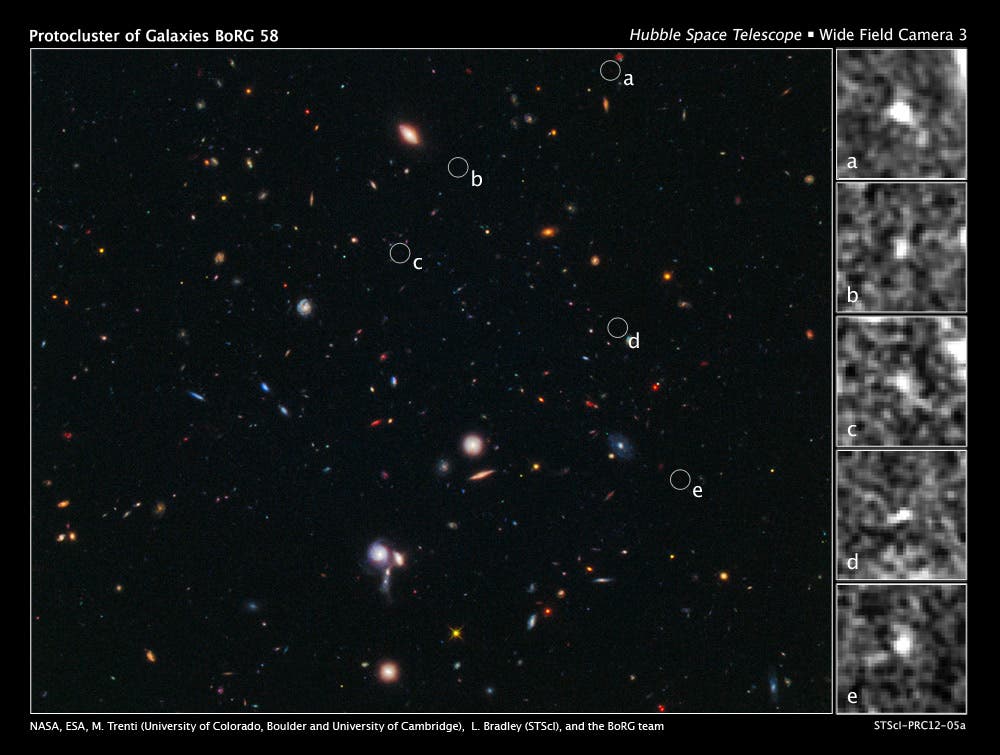
The ever scientifically productive Hubble just came out with another gem that will help scientists unravel the mysteries of the Universe, after the telescope snapped a photo of a couple of galaxy far, far away, wrapped together in a cosmic dance which most likely led in in the forming of a galaxy cluster – the oldest so far found.
Galaxy clusters are the biggest structures in the Universe, and are typically comprised from 50 to as much as a few thousands galaxies. The Hubble Space Telescope captured just five extremely bright galaxies, located a staggering 13.1 billion years, all of which are in the process of merging into a galactic cluster.
“These galaxies formed during the earliest stages of galaxy assembly, when galaxies had just started to cluster together,” said Michele Trenti of the University of Colorado at Boulder and the Institute of Astronomy at the University of Cambridge in the U.K. “The result confirms our theoretical understanding of the buildup of galaxy clusters. And, Hubble is just powerful enough to find the first examples of them at this distance.”
Interestingly enough, Hubble spotted the galaxies by accident, while surveying a random patch in space in infrared light. Since these ancient galaxies are so far away, the light emitted by them has stretched tremendously towards the red shift of the spectrum and thus infrared analysis is the only viable means of observing. NASA says the galaxy has likely grown into one of today’s massive “galactic cities,” comparable to the nearby Virgo cluster of more than 2,000 galaxies.
“We need to look in many different areas because the odds of finding something this rare are very small,” said Trenti, “Typically, a region has nothing, but if we hit the right spot, we can find multiple galaxies.”
“The five bright galaxies spotted by Hubble are about one-half to one-tenth the size of our Milky Way, yet are comparable in brightness,” NASA reported. “The galaxies are bright and massive because they are being fed large amounts of gas through mergers with other galaxies.”
Was this helpful?



